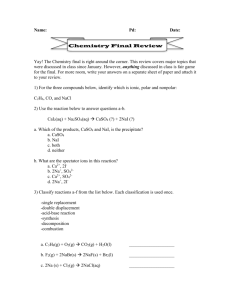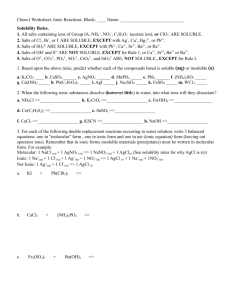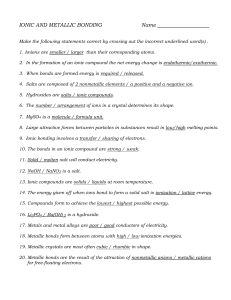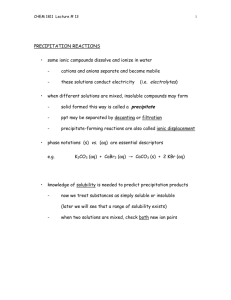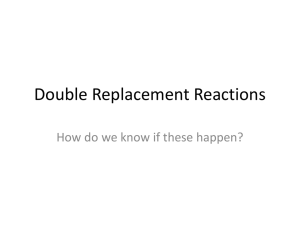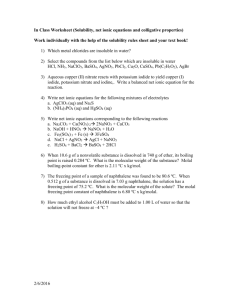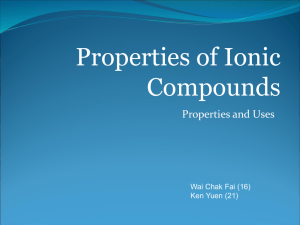Water Activity in Food Preservation
advertisement
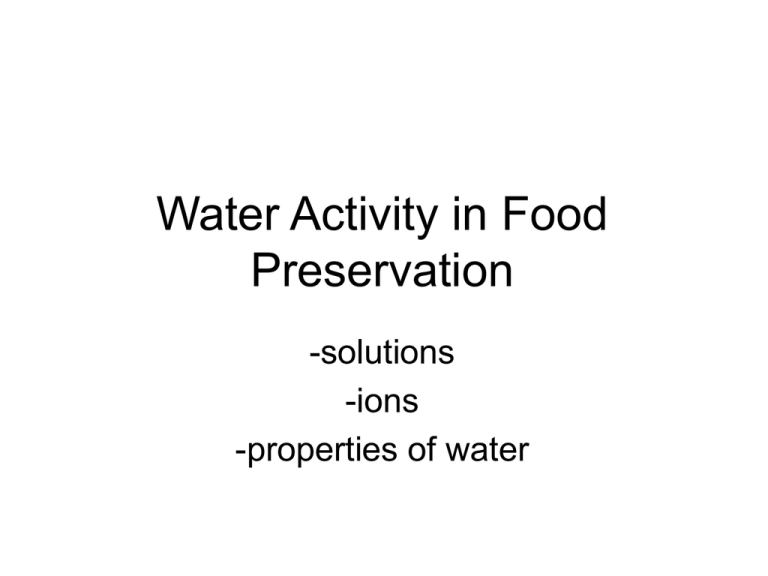
Water Activity in Food Preservation -solutions -ions -properties of water Salts are IONIC COMPOUNDS -Ions form between metals and nonmetals. -All atoms will react until the atoms have 8 electrons in their valence (outer) shells. -Watch the animation of sodium reacting with chlorine to form table salt, sodium chloride (NaCl): http://www.visionlearning.com/library/module_viewer.php?mid=55 -Other examples of ionic bonding: http://www.teachmetuition.co.uk/Chemistry/Chemicalstructureandbonding/ionic_bonding. htm Properties of Water http://www.northland.cc.mn.us/biology/Biology1111/animations/hydrogenbonds.html Water molecule Water as a Solvent http://www.northland.cc.mn.us/biology/Biology1111/animations/dissolve.html Dissolving animation Water Activity (Aw) and Free Water in Food Preservation http://physioweb.med.uvm.edu/bodyfluids/osmosis.htm Water activity osmosis (follow links to sample problems) http://www.stolaf.edu/people/giannini/flashanimat/transport/osmosis.swf Salt and free water REVIEW QUESTIONS • What holds ionic compounds together (example: salts?) • Water is a molecule with polar covalent bonds. What does polar mean? • Why is water such a good solvent for salts? • What does Aw stand for? • How can the water activity be decreased? • Water moves or diffuses from an area of high water activity to an area of low water activity. -At the beginning of the meat experiment, where was the water activity the highest: inside of the meat or outside in the bag? -Would water move from inside meat to outside bag, or from bag into meat? WHY?????
